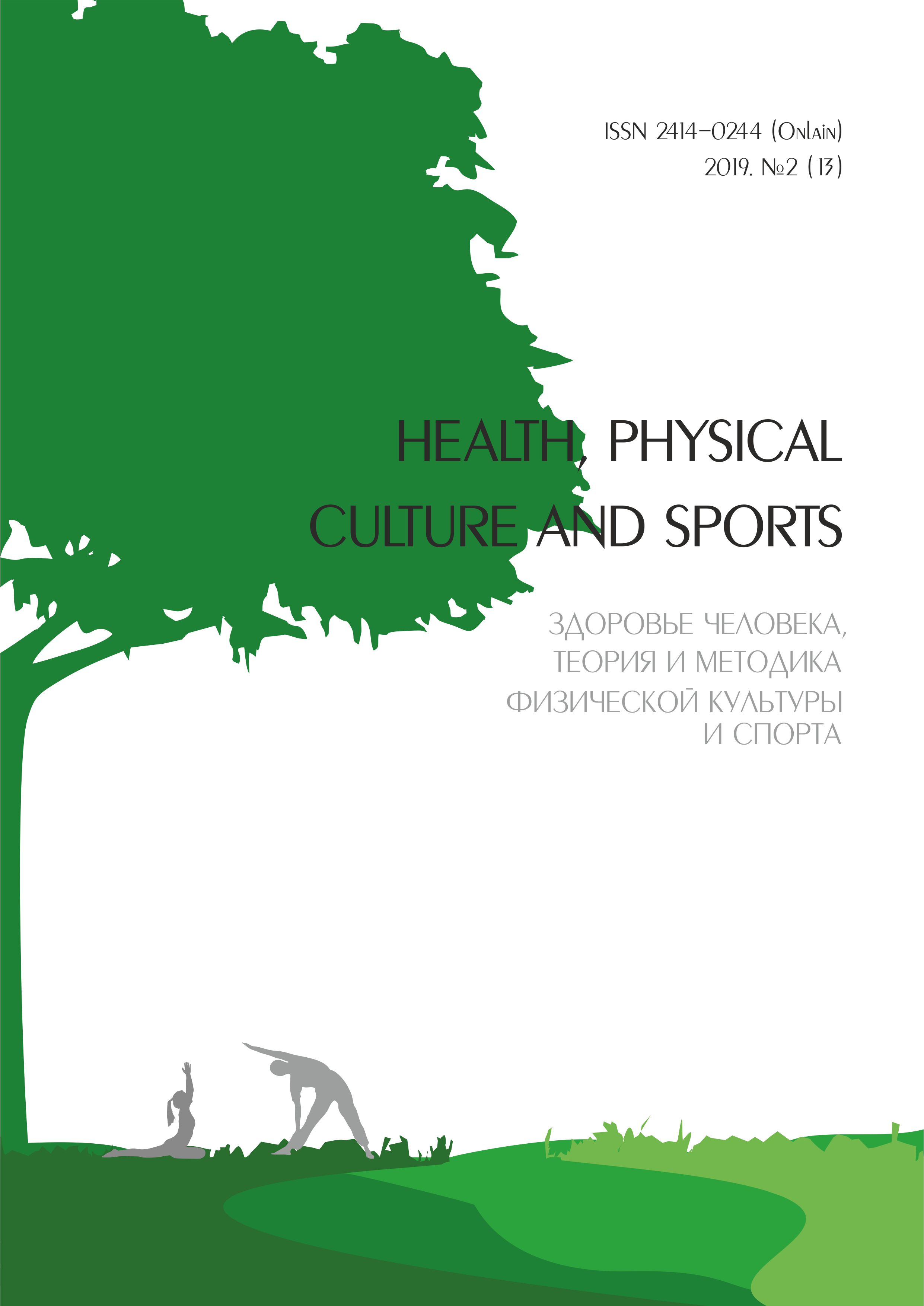Hygienic normalization of school furniture as a component of paradigms of prevention of breach of a child
Abstract
Protecting the health of children and adolescents at the present stage of development of society is a priority of modern hygiene and medicine. During the school age period, an increase in health disorders is observed - the appearance of premorbid conditions and the development of chronic diseases. A significant impact on the health status of school-age children has: physical inactivity, inadequate daytime and nutrition, an intensive educational process, social pressures and age-related physiological features of their development. The aim of the study was to determine the causes and consequences of the influence of the school environment on the indicators of children's health, primarily the incidence of the musculoskeletal system. Determining the role of hygienic regulation of school furniture as part of the prevention paradigm of the adverse influence of school environment factors on the health of schoolchildren. The main contribution to morbidity in the musculoskeletal system in children is impaired posture and scoliosis, which are caused by the inappropriate work posture of the child due to the inconsistency of the workplace parameters with its anthropometric data. Today, hygienic science and pedagogical practice have some work to correct the current situation - these are transforming desks (for junior classes) with the possibility of individual adjustment to the student’s growth parameters, desks, sliding-type student tables, etc. However, their widespread introduction into teaching practice high cost, and in the absence of a state policy on subsidizing school furniture, the problems of preventing postural disorders and reducing visual acuity of schoolchildren continue to be unresolved. Conducted sociological studies have shown that more than 70% of students and 82% of their parents report a deterioration in the health of children during school. Departure from the classical party of F.F. Еrisman, as an optimal student's workplace, especially in the lower grades, led to the leveling of the basic principle of the prevention of violations of posture and scoliosis in children, which led to a significant deterioration in health indicators. To solve this problem, it is necessary to purposefully change the state policy on subsidizing school furniture
Downloads
References
Батршин И.Т. Структура нарушений осанки у школьников // Гений Ортопедии. Нижневартовск, 2010. №3. С. 60–64.
Кашин А.Д. Сколиоз и нарушения осанки: лечебная культура в системе медицинской реабилитации : учебно-метод. пособие для врачей и инструкторов лечебной физкультуры. Минск, 2000. 240 с.
Солодков А. С. Физическое и функциональное развитие и состояние здоровья школьников и студентов России // Ученые записки университета Лесгафта. 2013. №3 (97). С. 163–171 [Электронный ресурс]. URL: https://cyberleninka.ru/article/n/fizicheskoe-i-funktsionalnoe-razvitie-i-sostoyanie-zdorovya-shkolnikov-i-studentov-rossii (дата обращения: 04.04.2019).
Иванов В.Д., Вахитов М.Г. Факторы, воздействующие на здоровье учащихся в современных условиях // Физическая культура. Спорт. Туризм. Двигательная рекреация. 2018. Т. 3, № 1. С. 70–73.
Алифанова Л.А. Реализация системного подхода к сохранению здоровья и гармоническому развитию школьников // Педиатрия. 2007. Т. 86, № 2. С. 106–110.
Беспутчик В.Г., Хотько А.В., Ярмолюк В.А. Здоровьесберегающие и здоровьеформирующие технологии профилактики нарушений и воспитания осанки у детей младшего школьного возраста. Минск, 2009. С. 11–14.
Вайнруб Е.М., Волощук А.С. Гигиена обучения и воспитания детей с нарушениями осанки и больных сколиозом. Киев, 2006. 179 с.
Макарова Ю. В. Профилактика нарушений осанки у детей младшего школьного возраста // Педагогическое мастерство: материалы IX Междунар. науч. конф. (Москва, ноябрь 2016 г.). М., 2016. С. 183–185.
Егоров Г. Е. Нарушение осанки и сколиоз. Новокузнецк, 2009. 103 с.
REFERENCES
Abubakirova A.V., Skachkova M. A., Pligina E. V. 2014. Skrinningovye metodiki v kom-pleksnoi otsenke sosto-yaniya zdorov'ya detei i podrostkov. Vrach-aspirant, 1.2. S. 245–249 (in Russian).
Batrshin I.T. 2010. Struktura narushenii osanki u shkol'nikov. Genii Ortopedii. Nizhnevar-tovsk, 3. S. 60–64 (in Russian).
Kashin A.D. 2000. Skolioz i narusheniya osanki: Lechebnaya kul'tura v sisteme meditsinskoi reabilitatsii: Uch.-metod. posobie dlya vrachei i instruktorov lechebnoi fizkul'tury. Minsk, 240 s. (in Russian).
Solodkov A. S. 2013. Fizicheskoe i funktsional'noe razvitie i so-stoyanie zdorov'ya shkol'nikov i studentov Rossii. Uchenye zapiski universiteta Lesgafta, 3 (97). S. 163–171. URL: https://cyberleninka.ru/article/n/fizicheskoe-i-funktsionalnoe-razvitie-i-sostoyanie-zdorovya-shkolnikov-i-studentov-rossii (Accessed: 04.04.2019) (in Russian).
Ivanov V. D., Vakhitov M. G. 2018. Faktory, vozdeistvuyushchie na zdorov'e uchashchikhsya v sovremennykh usloviyakh. Fizicheskaya kul'tura. Sport. Turizm. Dvigatel'naya rekreatsiya, T. 3, 1. S. 70–73 (in Russian).
Alifanova L.A. 2007. Realizatsiya sistemnogo podkhoda k sokhraneniyu zdorov'ya i gar-monicheskomu razvitiyu shkol'nikov. Pediatriya. T. 86, 2. S. 106 – 110 (in Russian).
Besputchik V.G., Khot'ko A.V., Yarmolyuk V.A. 2009. Zdorov'esberegayushchie i zdorov'e-formiruyushchie tekhnologii profilaktiki narushenii i vospitaniya osanki u detei mladshego shkol'nogo vozrasta. Vinsk. S. 11–14 (in Russian).
Vainrub E.M., Voloshchuk A.S. 2006. Gigiena obucheniya i vospitaniya detei s narusheniyami osanki i bol'nykh skoliozom. Kiev, 179 s. (in Russian).
Makarova Yu. V. 2016. Profilaktika narushenii osanki u detei mladshego shkol'nogo vozrasta. Pedagogicheskoe masterstvo: materialy IX Mezhdunar. nauch. konf. (Moskva, noyabr' 2016 g.). Moskva. S. 183–185 (in Russian).
Egorov G. E. 2009. Narushenie osanki i skolioz. Novokuznetsk, 103 s. (in Russian).
Copyright (c) 2019 Health, physical culture and sports

This work is licensed under a Creative Commons Attribution-NonCommercial 4.0 International License.
An author should not normally publish manuscripts describing essentially the same research in multiple journals or publication venues. Such redundant publication is generally considered to constitute unethical publishing behavior, and if discovered may result in a manuscript under consideration being rejected, or a published article being retracted.
Authors of manuscripts reporting on original research should present an accurate account of the work performed, accompanied by an objective discussion of its significance. Underlying data should be represented accurately in the manuscript. The manuscript should contain sufficient detail and references to permit others to replicate the work. The fabrication of results and the making of fraudulent or knowingly inaccurate statements constitute unethical behavior and may be cause for rejection or retraction of a manuscript or published article.





